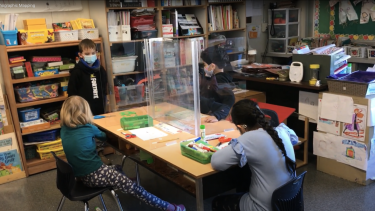
Letter & Word Mapping Takes Off Like Wildfire at Ross
The Learning Commons was abuzz on Friday, November 26th, as seven of our teachers dedicated the afternoon to learning about letter mapping. Addressing one part of our school goals plan, Early Learning Support Teacher, Natalie Lamont, enthusiastically presented how students learn to master the alphabetic principle through orthographic mapping.
About orthographic mapping:
Critical in the early years is that students must identify the number of sounds in a word (called phonemes) and then move to associating the letter or letters (graphemes) that represent each sound. As students take part in mapping the graphemes to the phonemes, they begin to understand predictable relationships between spoken sounds and the written letters that represent them— this is at the heart of mastering the code to read and spell. As students advance through the grades, and in their understanding, eventually they move from mapping letters to mapping entire words (e.g., examining root words, prefixes, suffixes and word meaning).
Natalie’s work at our school started with our K and K/1 teachers. Her impact in these classrooms has been tremendous - so much so that all members of our K-5 staff are eager to learn from her. Kindergarten teacher, Corinna Ulvild recognizes how orthographic mapping has changed program delivery in her class: “Natalie and I have worked to create balanced literacy centers that focus on mastery of alphabet knowledge and sound knowledge. We also reorganized and structured my program in a way that was more efficient and effective.” “For the development of sound knowledge, we added songs and new media that focused on the pronunciation of the individual sounds. We focused on how the mouth moves to make the correct sound.”
Learn, firsthand, about orthographic mapping in Mrs. Remillard’s K/1 room: